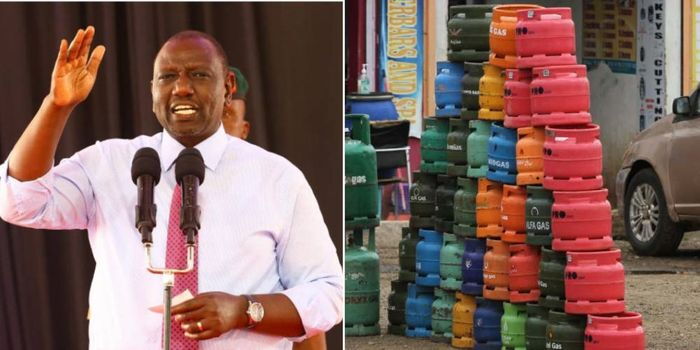Inside Ruto’s Gas Cylinder Plan After a 3-Year Wait
The Government of Kenya has finally moved forward with President William Ruto’s long-awaited plan to provide affordable gas cylinders to households, nearly three years after the pledge was first made.
The Ministry of Energy and Petroleum has now invited Expressions of Interest (EoI) from companies to locally manufacture subsidised 6kg LPG cylinders under a cost-sharing arrangement.
According to the plan, the Government will cover 40 per cent of the cost, LPG marketing companies will contribute another 40 per cent, while households will only pay 20 per cent. This formula is meant to reduce the burden on consumers while still ensuring private companies remain actively involved in the supply chain.
Focus on Rural and Peri-Urban Areas
The State Department for Petroleum explained that the programme will target all 47 counties, with special focus on rural and peri-urban regions where the use of clean cooking gas is still very low.
Many families in these areas still rely heavily on charcoal, firewood, or kerosene—fuels that are expensive, environmentally harmful, and hazardous to health.
“The LPG cylinders will be manufactured within the country and distributed in line with the Bottom-Up Economic Transformation Agenda (BETA),” the Ministry said, stressing that the initiative is designed to not only provide affordable energy but also create local jobs through domestic production.
What the Government and Companies Will Provide
Under the programme, the Government of Kenya will help fund the manufacturing costs of cylinders, the initial gas (seed gas), and necessary accessories.
On their part, LPG marketing companies will act as the official brand owners of the cylinders. They will be responsible for refilling, maintenance, and safety compliance as required by the Petroleum (Liquefied Petroleum Gas) Regulations, 2025.
In addition, these companies will provide households with burners, grills, and seed gas, ensuring that once a family receives a cylinder, they can begin using it immediately without facing additional upfront costs.
The consumer’s small contribution will be treated as a deposit, making the switch to LPG more affordable and sustainable for low-income families.
Accountability and Safety Measures
To ensure accountability, every subsidised cylinder will come fitted with track-and-trace technology. This system, overseen by the Energy and Petroleum Regulatory Authority (EPRA), will help monitor usage, prevent illegal refills, and boost safety standards across the country.
The Ministry has also made it clear that only prequalified local cylinder manufacturers will be allowed to participate in the project. “The Government of Kenya shall prequalify manufacturers and share their details with successful bidders,” the notice explained, pointing out that only firms with proven capacity, technical expertise, and proper facilities will be selected.
Long-Awaited Campaign Promise
For many Kenyans, especially those in middle and lower-income brackets, free or subsidised gas cylinders have long felt like an unfulfilled campaign promise. During his 2022 campaigns, President Ruto promised to make clean cooking gas accessible to all households.
In 2023, he even assured citizens that by June of that year, gas cylinders would cost between Ksh300 and Ksh500. That target has not been met, but this new move signals a step closer to turning the promise into reality.
If successfully rolled out, the programme could transform how millions of households cook, reduce reliance on dirty fuels, improve public health, and support the government’s agenda of affordable and clean energy for all.
Join Government Official WhatsApp Channel To Stay Updated On time
https://whatsapp.com/channel/0029VaWT5gSGufImU8R0DO30


